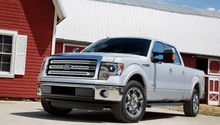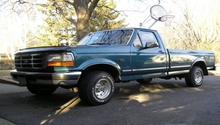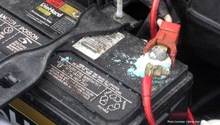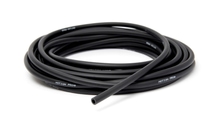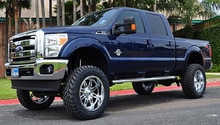Ford F-250: Fuel System Maintenance
Learn about your F-250's fuel system and how to maintain it. We'll break down the components that make sure your Super Duty's engine gets fuel. Discover what common issues you should look out for down the road for gasoline and diesel Ford trucks, too.
This article applies to the Ford F-250, F-350 Super Duty 2005-2014.
The fuel delivery system is made up of three major components: the fuel pump, fuel filter, and fuel lines. It's important to know the signs of them failing or needing replacing as well as their maintenance schedule. While the fuel system is similar in both the gas and diesel engines, some things will vary.
Fuel Filter
The fuel at the pump can contain impurities, like dirt, dust, and rust, that it picks up from the tank it's in. To perform optimally, the fuel injectors need to spray a fine mist to create a clean burn, but they can get clogged easily from trash in the fuel. The fuel filter prevents this by collecting all the trash before it gets to the injectors. Over time the filter will get dirty and need to be replaced, usually every 10,000 to 15,000 miles. Symptoms of a clogged fuel filter include hesitation when accelerating or simply a general feeling of loss of power. Failure to change a clogged filter in a timely manner can burn up your fuel pump by forcing it to work harder to get fuel through the lines. Usually there's always at least one filter located on the frame rail near the gas tank; in diesels you'll also normally see a second one under the hood.
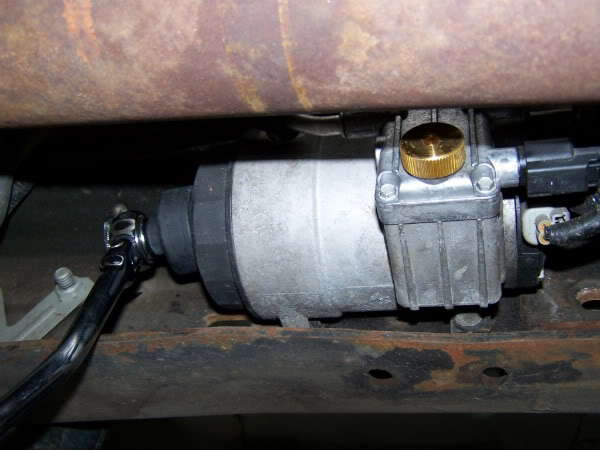
Figure 1. Fuel filter on frame rail. 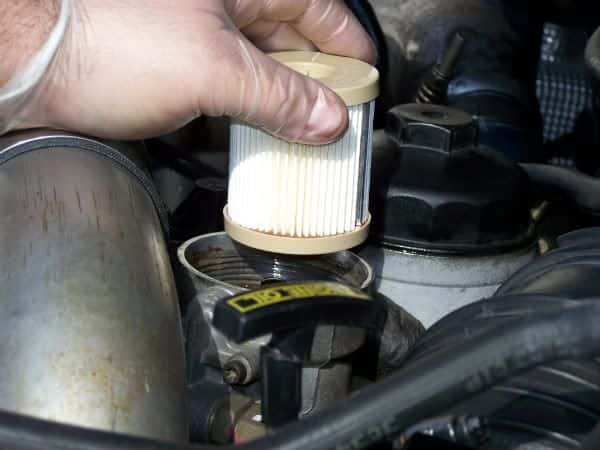
Figure 2. Fuel filter under the hood.
Fuel Pump
The fuel pump is responsible for taking fuel from the tank and pumping it to the engine. Fuel pumps will overheat and breakdown more quickly if they are frequently run on an empty tank. The lifespan of a typical pump from the factory is around 8 to 15 years, however, a lot of driving can shorten the life some.
The fuel pump can be in two different locations depending on your truck: either as an in-tank pump or on the frame rail. In certain cases you could have both. Symptoms of a failing fuel pump are similar to a clogged filter. The factory fuel pumps aren't serviceable, so they'll need to be replaced when they go out. Most aftermarket pumps have serviceable parts and will flow more fuel than the OEM units, too.
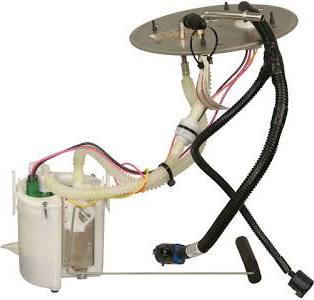
Fuel Lines
The fuel lines carry the fuel from the tank to the motor with the help of the pump. The chance of these failing is pretty slim, but with enough road salt and rust they'll begin to go eventually. Luckily a fuel line problem is pretty easy to spot; you'll be greeted by fuel spraying underneath the truck when there's a hole, or a severe lack of fuel being delivered if the line has been pinched. Unfortunately, replacing them isn't as easy. Depending on the extent of the damage, you'll have to replace a section or the entire line.

Figure 4. Highlighted above are the fuel lines for an F-250 with the 6.2L V8 or V10 Triton. 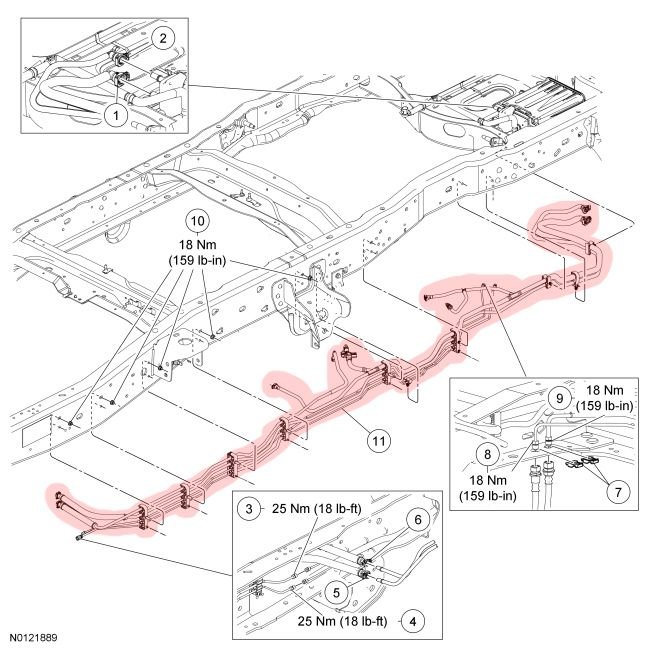
Figure 5. This diagram highlights where the fuel lines are located on the frame rail. Typically they're mounted on the passenger side rail. Your truck may differ depending on age and powertrain configuration.
Scheduled Maintenance
Ford recommends the fuel filter be changed every every 15,000 to 20,000 miles on Power Stroke diesel F-250s and Super Duty trucks. Late model gasoline F-250s have a filter in the fuel tank that should last the lifetime of the vehicle. If it doesn't, you'll have to drop the gas tank in order to access it.
Common Questions
Where is the fuel filter located?
On the frame rail near the fuel tank and possibly under the hood as well.
Where is the fuel pump located?
Three possible configurations: on the frame rail near the fuel tank, in the fuel tank, or both.
Why is my truck hesitating or dying?
There are multiple causes, as the motor relies on a proper mixture of air to fuel to properly run. If you've ruled out air-related problems, there's an issue in the fuel delivery. The first thing to check is the fuel filter, as this is the most likely cause to hesitation as well as a cheap, easy fix. After the filter, you should check line pressure, which can help determine if the pump is moving the proper amount of fuel. If it isn't, the pump or a damaged line is likely the cause. If it is moving the proper amount, clogged fuel injectors are a likely cause.
Related Discussions and Sites
- Disconnecting the Fuel Line - Ford-Trucks.com
- Question about F-250 Fuel Lines - Ford-Trucks.com
- Fuel Pump Relay Location - Ford-Trucks.com
- F-250 Fuel Pump Relay or Fuse - Ford-Trucks.com
- How to Change Fuel Filter and Oil Filter - Ford-Trucks.com
- Symptoms of a Bad Fuel Filter - F150online.com
- Fuel Line Diagrams - Alldata.com

